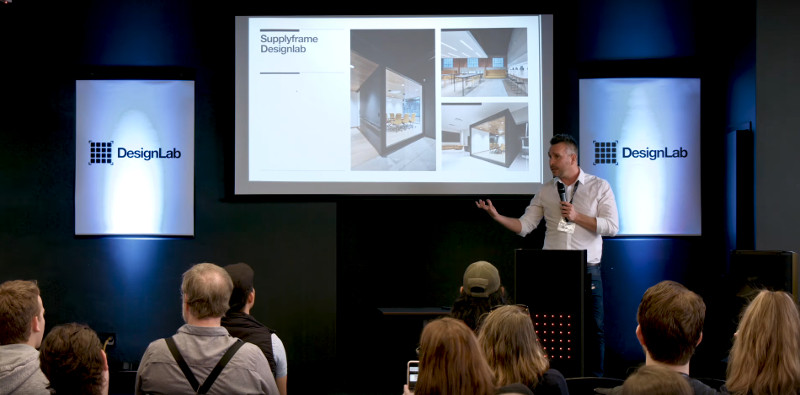When we look at a product or project here at Hackaday it is likely that our interest has been caught by its internal technology, or perhaps by its functionality. It is easy to forget that there is another angle to each and every item that graces these pages, and it is every bit as important as those we have already mentioned. Aesthetic design, the look and feel of a product, is something that is so often overlooked.
One of the speakers at the Hackaday Superconference was [Cory Grosser], one of America’s leading independent product designers, and the designer of the Supplyframe Design Lab in which the Superconference was being held. In his talk he covered some of the principles of design, touching on its psychology and its purpose in creating a successful product. In doing so he delivered a fascinating talk full of insights into the design of products both famous and somewhat obscure.
The Spoon and the Smartphone
Cory starts by asking the question: does form follow function? His examples were well-chosen, a spoon and a smartphone.
The function of the spoon is easy to define, but the smartphone has hundreds if not thousands of functions and thus its form is not dictated by them in particular. Design can be defined in terms of psychology, identifying instinctive, rational, and narrative influences in a nuclear flask designed to signify danger, a classic Honeywell thermostat, and a wine storage product inspired by a bowling ball.
Emotion has a huge influence on design, particularly in engineering a design that will be sold to its users. Cory details the Philipe Starck Alessi lemon squeezer, the first iPod, and then Apple’s iconic adverts featuring their then-unique white earbuds. Products that you want to own despite your perhaps having little use for them, and products that create a tribe around their ownership.
What is the Context of the Design?
Perhaps the most interesting point he made though was that there is sometimes an emphasis on design for its own sake as in fulfilling a particular purpose associated with its object, as opposed to design for the sake of style. He told us “There is nothing wrong with style”, and took us through the car industry as a particular example of one in which style is a crucial element of the success of a product. He split the effect of design in this context into the visceral, the reflective, and the rational. As examples, he looked at his instantaneous reaction of desire to a sportscar, and then at how Volkswagen had taken an unattractive and not especially good product — the Beetle — from a quirky small car and former people’s car of a fascist dictatorship to a cultural icon and symbol of American counterculture. Then he looked at how they’d taken the design cues from that association to market their current generation of retro Beetles and vans.
He left us with the quote: “Design is empathy”. Meaning that good design should anticipate how a user is going to feel about the product when they see it,rather than just design for the product itself. He used the Design Lab itself as an example; its white floor might not at first sight be the most practical choice as it needs frequent cleaning, but the impression it gives to the user of the space is more valuable than the overhead of keeping it clean.
















I’ve always disliked the design of our silverware, as the handle outweighs the working end, meaning they won’t stay in the bowl or on the plate. My functional considerations were outweighed by the SO’s appreciation for form.
I’ve learned to let it go. I’m not bitter. I just work around the functional constraints by leaning them against my tableware, and cringe silently when they slip off the plate-in-transit and clatter on the floor.
Could be the company trying to force cutlery ettiquette on you and not some design oversight.
Sometimes annoying designs are the designer telling you you’re using it ‘wrong’.
I have a similar problem. If you look close, you can see “tine marks” on the floor from where overbalanced forks took the plunge on the way from kitchen table to kitchen sink.
Yes and then the dishwasher designer devised cutlery racks that won’t fit those fork backends.